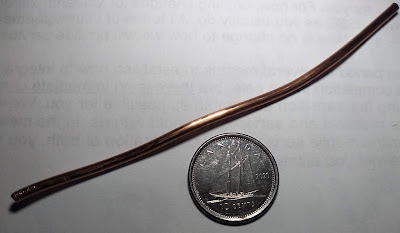There are two common ways of wiring solar PV arrays. Each panel can be connected to a microinverter, with each microinverter connected in parallel to an AC bus. Alternatively, panels can be connected in series, with one or more DC strings connected to an inverter. Although there is debate over which design is best, at Solar Si, we prefer string inverters. This is an analysis of DC wiring losses with an array of 8 72-cell LONGi PV modules of about 450 Watts each.
There are two sources of wiring resistance in the array. The first is from the wire itself, and the second is from the connectors. The 12 AWG wire used for the panel output cables has a resistance of 5.2 mOhm/m. The MC4 connectors are specified to have a contact resistance of less than 0.5 mOhm. While this may be the resistance when tested in a clean and dry factory, test results in warm and humid conditions show a much higher resistance. Reliability Model Development for Photovoltaic Connector Lifetime Prediction Capabilities indicate resistance in the field is likely to be around 2.5 mOhm.
For the string array, the panels are arranged in the portrait configuration, with the inverter situated 1m from the array. The panels are about 1.06 m wide, making the length of the array 8.5 m. Each panel has a 20cm and a 40cm negative and positive output cable. Unlike the 12 AWG wire used for the PV panel output cables, in Canada, field wiring for PV strings is almost always done with 10 AWG RPVU wire. This has a resistance of 3.28 mOhm/m, and a total of 10.5 m are used for the array.
With 8 panels, there are 7 connections between panels, plus two connections at the ends mating with the RPVU wire. The DC connections on the inverter are usually not MC4, but for simplicity the resistance is assumed to be the same. Adding the positive and negative connections connections to the inverter, the total comes to 11. Here's the calculations for the total resistance:
10.5 m * 3.28 mOhm/m = 34.4 mOhm
12 AWG 0.6 m panel cables * 8 = 4.8m, * 5.2 = 25 mOhm
11 contacts/string * 2.5 mOhm = 27.5 mOhm
total: 86.9 mOhm
For the microinverter array, the optional 1.4 m PV panel output cables will be needed in order for the cables to reach the corresponding microinverter. This increased the total length of 12 AWG wire to 22.4 m. Here's the calculations for the total resistance:
12 AWG 2.8 m panel cables * 8 = 22.4 m, * 5.2 = 116 mOhm
16 contacts * 2.5 mOhm = 40 mOhm
total: 156 mOhm
Although the microinverter configuration higher resistance losses, they are not significant. During peak power output, DC current is about 10 Amps. Using P = I^2 * R, power losses are around 0.5%. Most of the time the array output current is much less than 10 Amps, so the average power loss is much lower. There are additional losses from the AC bus connectors, which are also not significant.
In conclusion, power losses are higher with microinverters than string inverters, but they are not significant. The justification for choosing string inverters lies more with the cost savings in material and labor. For an array with 16 panels, the cost of a 6 kW inverter with 2 string inputs is less than half the cost of 16 Enphase IQ7A microinverters.









